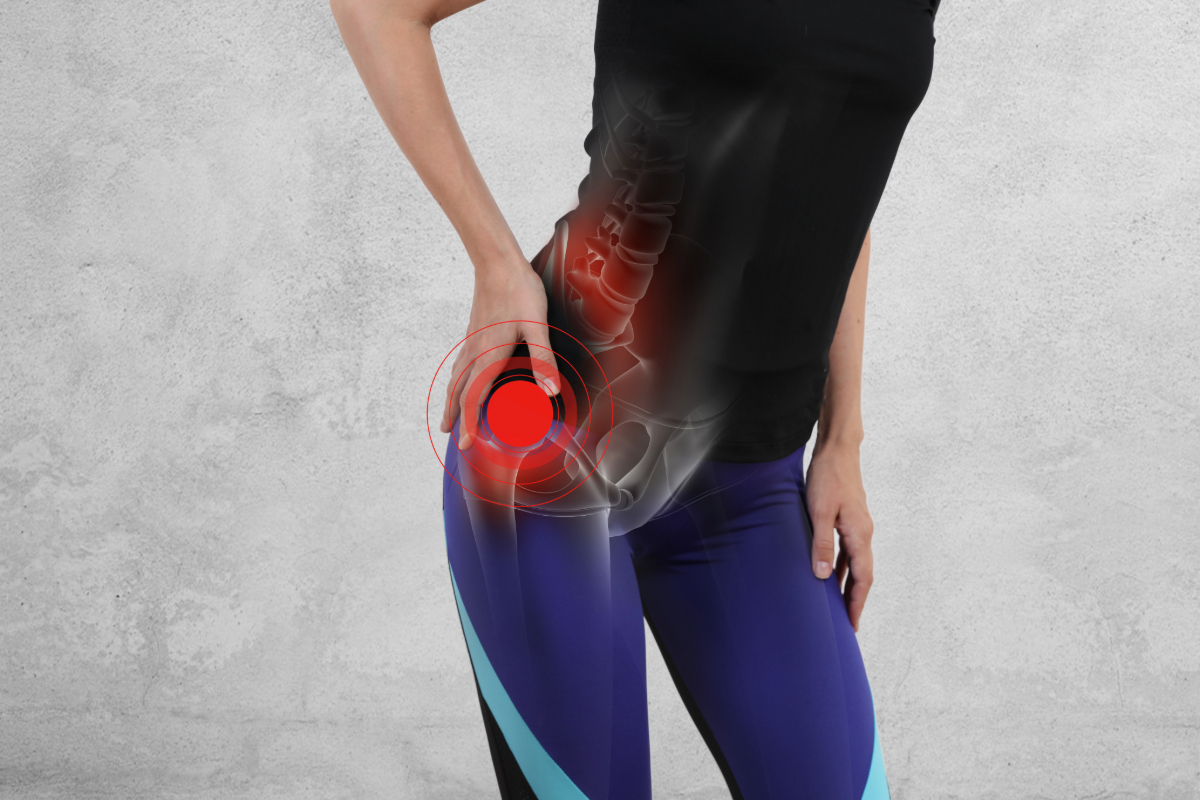
If you’re a runner or participate in running-oriented sports like soccer and football, then chances are you’ve had some hip pain in some form. Maybe it hasn’t been painful enough to make you deal with it. Yet, leaving hip pain untreated can lead to more serious injury. More importantly, however, it can prevent you from doing what you love.
While hip pain can lead to a serious injury, it may also be a symptom of an injury. Hip bursitis is a common problem among athletes who do a lot of running. Is it a tell-tale symptom? Pain in the upper thigh and hip joint. Left untreated, hip bursitis can prevent you from running and even walking due to the pain. Moreover, however, it could eventually lead to surgery if you do not take care of it right away.
What Is Hip Bursitis?
Each of your joints needs help moving smoothly and freely. Both muscles and tendons help your joints move efficiently, but it’s a fluid-filled sac between the joints that reduces friction and allows smooth motion. Similar to how things are easier to move across wet or icy surfaces, the sac – called the bursa sac – allows your joints to move easier and smoother.
There are two major bursae of the hip joint that can become inflamed and cause hip pain. One bursa sits right between the outside of the hip (where it’s most bony) and the tendon that passes over this area. Another bursa sits right on the inside of the hip near the ground. Bursitis is when this bursa becomes inflamed. Usually, the bursa on the outside of the hip is the most common area that gets inflamed. Pain results when the tendon passes over this area.
When you walk/run, or move your leg backward and forward, a tendon in your hip must pass over the bone with bursitis. This is why such simple tasks as walking become painful and difficult when you’re suffering from hip bursitis.
Overuse Through Running
Sometimes, hip bursitis is the result of an acute injury or surgery. However, in most cases, it’s simply caused by overuse and misuse. Runners experience hip pain related to bursitis quite frequently due to the high-impact movement of the leg backward and forward. This is especially true for long-distance runners. However, those athletes who do a lot of sprinting, such as soccer and football, could also experience inflammation in the hip joint.
Although many people assume their hip pain is related to the injury, there are specific symptoms of hip bursitis. Pain is mostly concentrated where the bursa is located – the bony part of the upper/outer thing. Other symptoms include tenderness in that specific area as well as swelling and difficulty sleeping on the same side. Running, and even walking if the bursitis is left untreated, can be painful and difficult.
Even though your symptoms might match up with hip bursitis, you need to get a clear diagnosis as many other hip injuries and medical conditions have the same symptoms. Iliotibial band tendonitis, hip pointers, and low-back problems can all result in the same pain that hip bursitis produces. You would be better off to get an official diagnosis than treat it yourself. Leaving your bursitis or hip pain untreated or doing the wrong treatment could result in further injury.
Treating Hip Bursitis
Usually, the easiest way to treat hip bursitis is to avoid activities that make the symptoms worse. However, who wants to give up running if that’s the sport you love, or if it’s involved in your sport? While avoiding such activities might not be possible, there are other options for managing bursitis and even lowering the risk of getting it.
As with many overuse injuries, the cause is repetitive stress with a lack of adequate breaks. So, making sure you’re recovering is important to reduce your risk of hip bursitis. Furthermore, reducing the stress on the hip joint and tendons by making sure your supporting muscles are strong will also help.
Physical therapy works to increase hip strength and flexibility, as well as make sure the muscles that support your hips are functioning properly. Having a strong core as well as working on your thigh muscles helps your hips move more efficiently. When you have strong core and thigh muscles, you’re recruiting supporting and stabilizing muscles to help your hips. It puts less stress on your hips, which leads to a lower risk of bursitis.
Exercises For Hip Pain
You should always get officially diagnosed if you have hip pain. Even if your symptoms are text-book bursitis – or any other hip condition – there could be something going on that’s the underlying reason for your pain for which you’re unaware. To have the best chance of success with treating your hip pain, you want to make sure you’re treating the right thing, which means getting an official diagnosis. A doctor, as well as a physical therapist, can diagnose you and put you on a treatment program.
For hip pain, however, you can find relief and even manage some of the pain with the following exercises. These are common exercises that are usually included in a therapy program for treating hip pain and hip bursitis.
- Bridges use your supporting muscles for the hips – hip flexors, glutes, hamstrings, and quadriceps. It’s done by lying on your back with your legs bent and your feet flat on the ground. While contracting your core – this is key – lift your hips and buttocks off the floor and sink to the floor slowly. Repetitions vary depending on your therapy program, but you can do up to 5 sets of 20 reps.
- Side Leg Raises strengthens another important supporting muscle, the iliotibial band. It helps with side leg motion. It may not make sense to strengthen this muscle when your pain is from moving your leg backward and forwards, which is why it’s often neglected. However, the IT band enhances the stability of the hip, as well as the knee. Lie on your side on the floor with your legs straight out from you at about 45 degrees. Lift your top leg, extended fully with your quadriceps and core engaged. Lower it back down to the starting position. You can do up to 15 reps of 4 sets on each leg.
- You can also add on in a similar fashion to Side Leg Raises and leg Circles, which enhance your range of motion and strength. With this exercise, instead of lifting your leg up and down, you draw circles in the air with your foot. Do up to 10 reps of 2 sets for each leg.
